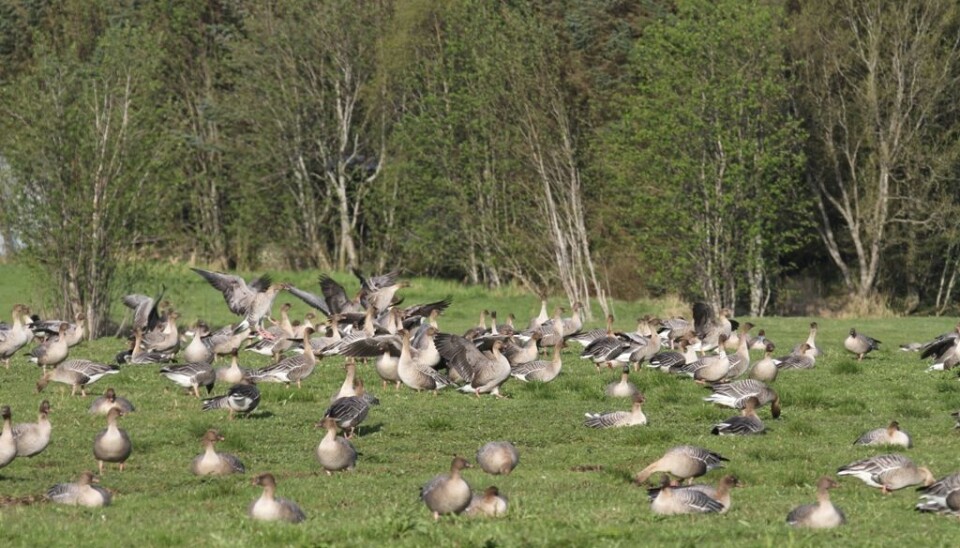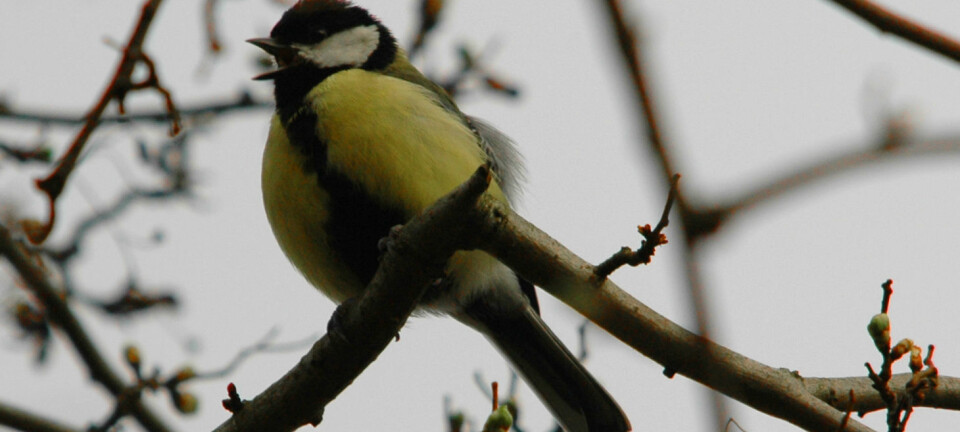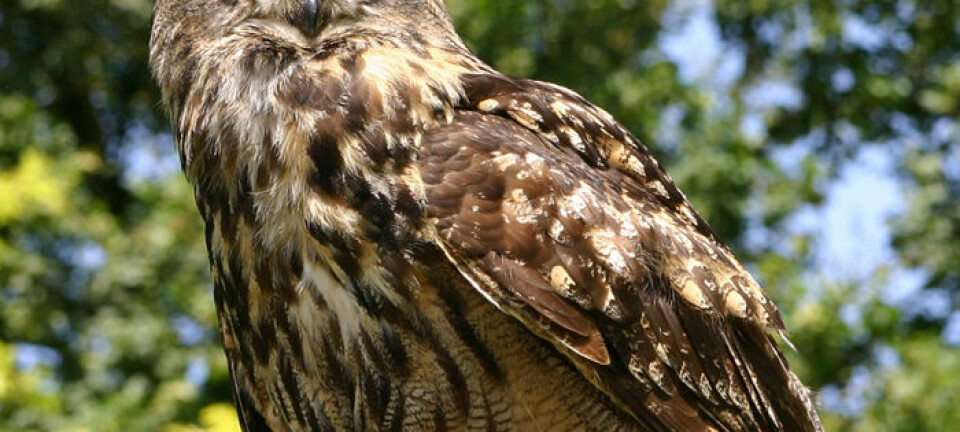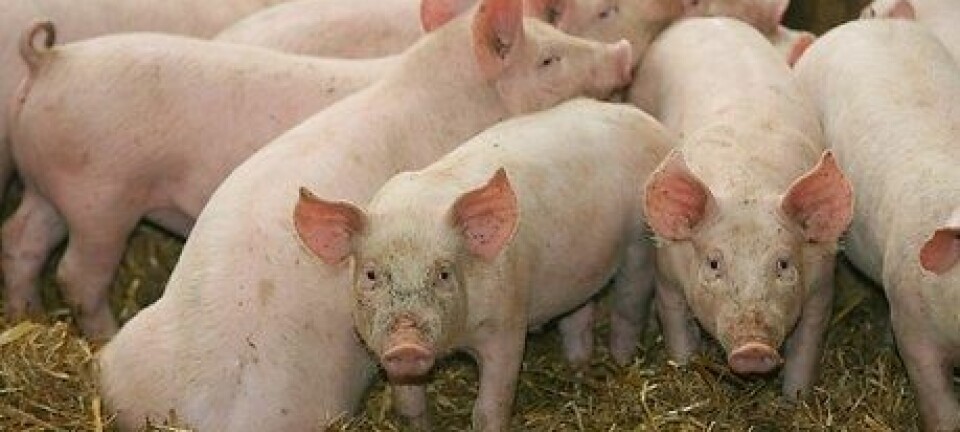
Grassland crops hit by greedy geese
It’s a long way from wintering grounds in Belgium and the Netherlands to the Arctic archipelago of Svalbard, so little wonder pink-footed geese stop over to forage along the way.
Denne artikkelen er over ti år gammel og kan inneholde utdatert informasjon.
Descending on pastures and farmland in Norway’s Trøndelag and Vesterålen regions, the geese graze and continue on their way. But left in their wake is short-cropped grass - and the risk of reduced crops, according to farmers.
With a rapidly growing Svalbard population of pink-footed geese, now numbering 80 000, the problem is not likely to go away.
Crop loss varies between fields
Researchers from the Norwegian Institute for Nature Research (NINA), the Norwegian Institute for Agricultural and Environmental Research (Bioforsk) and the University of Aarhus are carrying out a field study to examine the impact of pink-footed geese grazing on dairy grassland yields. Throughout the migratory season the team is monitoring grazing pressure and field regrowth.
Findings from year one of the study have recently been published in the journal Grass and Forage Science.

“Our findings confirm farmers’ reports about reduced crops, but show large variation between different fields – from hardly any crop loss in fields with limited grazing pressure, to significant losses in sites with high grazing pressure,” says Bioforsk researcher Anne Kari Bergjord.
Protecting grass with grazing cages
The researchers are gathering data by placing ‘grazing cages’ in a selection of fields ranging from heavily to lightly grazed sites. “The grazing cages prevent the geese from accessing parts of the field - providing an opportunity to compare for instance crop amount and quality between grazed and non-grazed grid squares,” project leader Ingunn Tombre at NINA explains.
Year one results showed that the crop from the most intensively grazed field was halved by first harvest, compared to the protected grid squares. But in fields with less grazing the crop impact was significantly reduced. In total, the biomass yield across all fields were reduced by approximately a quarter.
Grazing encourages weeds
As well as reducing the yield, goose grazing also encourages the growth of weeds. Cropped grass means more sunlight reaches the ground, where weeds start to sprout. Visiting geese can also carry seeds from neighbouring farmland.
“We took a sample from each grid square for species analysis. This enables us to see whether the amount of weeds increase with more intensive goose grazing,” says Bergjord.
The researchers anticipated an increase of weeds after a period of a few years. Surprisingly, the increase occurred already within the first year.
Overall the amount of sown species was 1.3 percent lower in the grazed grid squares compared to the non-grazed ones.
Evaluating the long term impact
“We’re currently deploying the grazing cages for the third year running,” says Ingunn Tombre.
“Monitoring the same squares over several years gives us a unique opportunity to evaluate the long term impact of grazing geese, and how this leads to increased costs and reduced profits for farmers.”
The findings from the project will be fed into a land management model under development in Nord-Trøndelag. The model will incorporate a range of measures - in order to address contentious issues between farming and wildlife management.

































